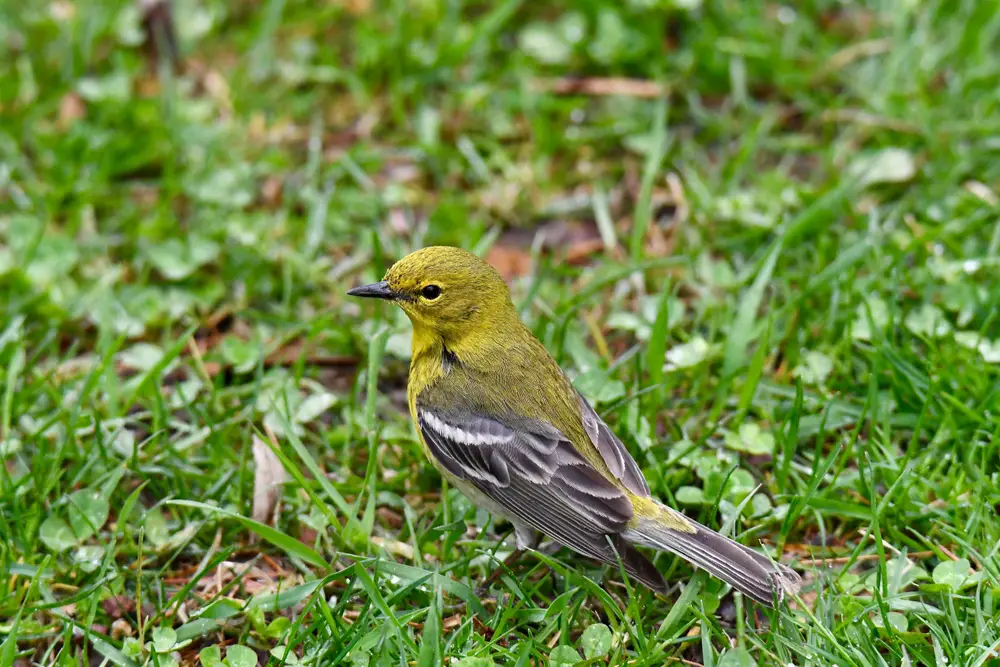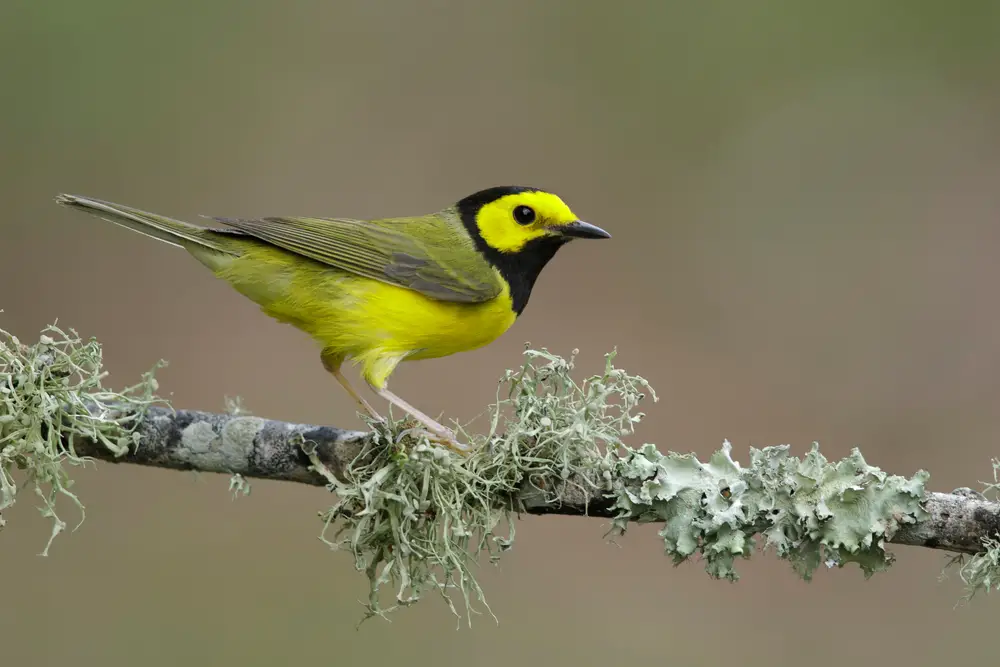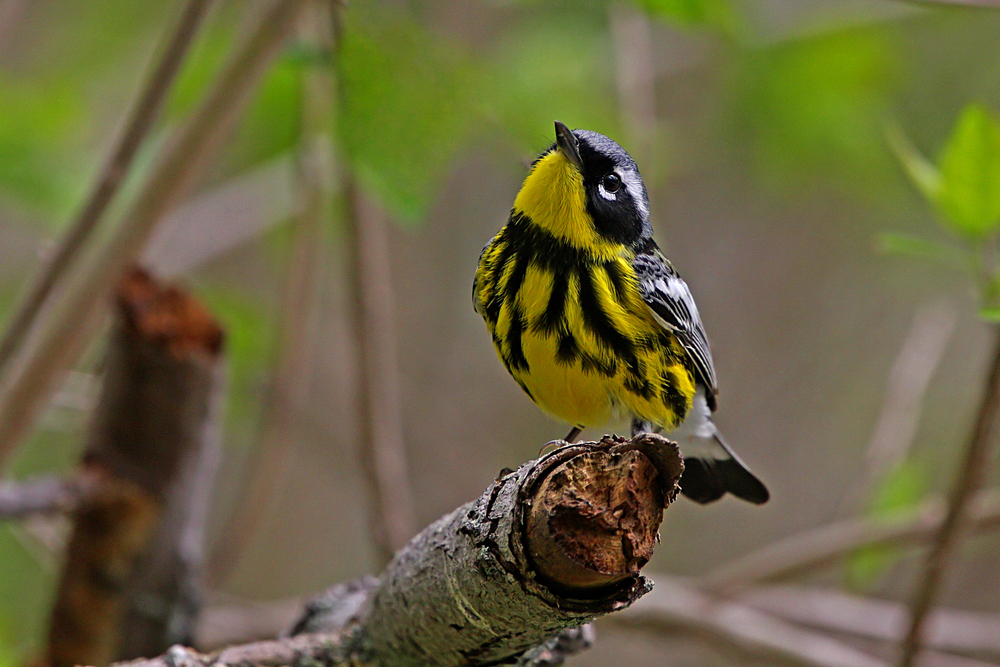14 types of warbler include yellow rumped warbler, Audubon’s warbler, Myrtle warbler, Goldman’s warbler, black-fronted warbler, yellow, common yellow throat, and yellow-throated warbler, black and white warbler, cerulean warbler, pine warbler, Prothonotary warbler, hooded, and Kentucky warbler.
There are 53 species of warblers in North America. 14 types of warblers include of the most diverse and colorful warbler species and how to identify each one. New World warbler species are passeriformes from the family Parulidae.
These colorful birds are sometimes called wood warblers. Despite the visual similarities between many of these western hemisphere warblers, warbler species from the Parulidae family are not at all related to the Old World warblers of the eastern hemisphere. There are 114 warbler bird species in the Parulidae family.
Looking at just the warbler birds of North America, there are still 53 warbler species. We’ve narrowed this vibrant and eclectic list down to 14. From the ever-popular yellow-rumped warbler to the friendly pine warbler, here are some of the favorite warbler species of birdwatchers in North America.
Yellow Rumped Warbler Identification and Appearance
The yellow-rumped warbler is affectionately called “butter butt” by birders with good reason. This common warbler species is characterized by yellow sides and its bright yellow rump. But did you know that the yellow-rumped warbler has four subspecies?
The subspecies of the yellow-rumped warbler were once considered separate species. In 2017, an attempt to reclassify the yellow-rumped warbler species failed, but this isn’t the only huge change the yellow-rumped warblers have gone through. In the 1970s, the Audubon warbler, the Myrtle warbler, the black-fronted warbler, and the Goldman’s warbler were all lumped into one group-the yellow-rumped warbler. The discourse in the ornithological community over the yellow-rumped warbler complex of bird species continues to this day.
Yellow-rumped warblers are sometimes listed under Dendroica coronata as well as Motacilla coronata. The most recent consensus has Setophaga coronata being the main yellow-rumped warbler species. Currently, the group is divided into 4 subspecies- Audubon’s warbler, Myrtle warbler, black-fronted warbler, and Goldman’s warbler.
How do you identify an Audubon’s warbler?
Audubon’s warblers have an overall dark slate gray and black feathers. They have white patches on the tail and wings. Yellow patches are found on the throat, chest, and crown. They also have the bright yellow rump specific to the yellow-rumped warbler species. Female Audubon’s warblers are lighter gray all over with similar markings.
The Audubon’s warbler (Setophaga auduboni auduboni) prefers coniferous forests and mixed woodland habitats. During the breeding season, the Audubon’s warbler ranges along the Pacific coast of North America. This warbler species is found from Mexico to Canada and Alaska. During the winter, this migrant bird heads as far south as Central America.
How common is the Myrtle warbler?
Myrtle warblers are the most common of the yellow-rumped warbler subspecies. This migrant warbler species is found in coniferous forests from the Rocky Mountains east to the Atlantic coastline. While non-native to Europe, Myrtle warblers have been spotted wintering in Great Britain.
Myrtle warblers (Setophaga coronata coronata) have steel gray and black feathers with a black chest, white throat, white underparts, and white under the tail. They have a black mask with a white streak over the eye. Female Myrtle warblers have brownish upper parts and white underparts with streaking. Both males and females have noteable yellow patches on the rump, crown, and sides.
Where is the Goldman’s warbler found?
The Goldman’s warbler is a non-migrant warbler species that lives in Guatemala and southern Mexico. This elusive little bird lives in juniper pine forests at high elevations. During the winter, the Goldman’s warbler flocks mix with migrant Audubon’s warblers.
Goldman’s warblers (Setophaga coronata goldmani) have overall black feathers with a yellow and white throat, white underparts, and white feathers on the wings and tail. The Goldman’s warbler has a bright yellow rump, yellow sides, and a yellow crown. Females have brown upper parts with a mottled black chest and white streaks on their wings. Females have the same bright yellow rump, sides, and crown markings as the male Goldman’s warbler.
What are the characteristics of the black-fronted warbler subspecies?
Black-fronted warbler is an all-over black warbler that is almost identical to the Goldman’s warbler. The most apparent difference between this warbler and the Goldman’s warbler is the throat. Instead of a yellow and white throat, the black-fronted warbler has a yellow throat. Like all yellow-rumped warblers, there’s some conflict over whether this bird is simply a hybrid or a separate bird species.
The black-fronted warbler (Setophaga coronata nigrifrons) is found in Durango and Chihuahua, Mexico. Though they are not a migrant warbler species, there are a few places where their breeding range overlaps with other yellow-rumped warbler subspecies. In these intersecting areas, black-fronted warblers and other subspecies are known to interbreed. Black-fronted warblers interbreed most often with Goldman’s warblers.
What does the yellow warbler look like?
The yellow warbler species are all over yellow with black feathering on the wings. There is a reddish crown on the head and red streaking on the belly. Because of their similar common names, they are sometimes confused with the yellow-rumped warbler, but they are two completely different bird species.
Yellow warblers (Setophaga petechia) are sometimes called American yellow warblers. Female yellow warblers look similar to adult males but lack the streaking on the belly and crown. The feathering on the female’s wings is greenish-gray rather than black. Both males and females have bright yellow feathers and black eyes.
During breeding season, yellow warblers can be found throughout North America. They prefer open woods but can also be found in well-planted residential areas. This tiny bird species faces hazards from urbanization to being caught in large spiderwebs. Even with all these challenges, they can live to be around 10 years old. In fact, the oldest known yellow warbler was an 11-year-old female found in New York!
How do you identify a common yellow throat warbler?
Common yellow throats are all over olive-gray with black masks and soft yellow throats. A white streak separates the black mask from the olive gray cap. Female common yellow throats have an olive gray cap with no black or white markings.
Common yellow throats (Geothlypis trichas) are found throughout North America, Central America, and the Bahamas. The only area they’re noticeably absent from is the western deserts of the United States and Alaska. This migrant bird favors open areas but prefers brush-covered fields, wetlands, and marshes over open woods.
Where is the yellow-throated warbler found?
Yellow-throated warblers have a more confined range map than many other warbler species on our list. They are usually found primarily in the southeastern United States, the Gulf Coast of Mexico, and islands in the Caribbean Sea. The yellow-throated warbler is one of the few warbler species that can be found wintering in the United States.
Yellow-throated warblers (Setophaga dominica) have gray and black upperparts, white underparts with black streaking, and a bright yellow throat. They have a black face mask and a prominent white eye streak. While this bird is often compared to the similarly named common yellow throat, the yellow-throated warbler more closely resembles the black and white warbler.

How do you identify a black and white warbler?
The black and white warbler species have striking black and white streaking all over its entire body. Both females and males have eye-catching black and white streaks, but the females have far more white than the males. Males have a black beak, while females have a lighter gray beak. They are found in eastern North America, Mexico, Central and South America, and the Bahamas.
Of all the North American birds on our list, the black and white warbler (Mniotilta varia) has some of the most unique attributes and behaviors. Because of their unique foraging habits, the genus Mniotilta, meaning “moss plucker,” was created especially for them. You might see them bouncing along a horizontal branch, searching for food. But they are most likely to be picking through bark, searching for bugs, just like nuthatches.
What are the physical characteristics of the cerulean warbler?
Male cerulean warblers have bluish-gray upper parts, which is where they get their name. They have a white belly and black and white streaks that are confined to their wings and sides. Females have similar markings, but the upper parts are blue-green, and their undersides are dusky yellow.
The cerulean warblers (Setophaga cerulea) are found in the eastern United States, along the Gulf of Mexico, and the Caribbean Sea. This brilliant blue songbird shares part of its breeding range with the black and white warbler. Since the two warbler species interbreed and share some commonalities, the cerulean warbler is thought to be a close relative of the black and white warbler. Due to the rapid loss of the deciduous forests they call home, the cerulean warbler population is steadily declining.
What habitat does the pine warbler live in?
Pine warblers prefer coniferous forests. They got their name due to being found almost exclusively in pine trees. From foraging for insects to nesting, these energetic birds spend the majority of their time in or flying between pine trees In the eastern United States and along the Canadian border. During the winter, they fly to the warmer southern states, remaining in the U.S.
Pine warblers (Setophaga pinus) are yellow with grayish fringes mixed in, giving the yellow a dark cast. They have olive-gray wings with some white feathering. Adult males have bright yellow underparts that extend all the way to their flanks. The yellow on the females is confined to the head and breast area.
Pine warblers are the only warbler species that eat large quantities of seeds. Along with pine seeds, they will also eat millet and sunflower seeds. Of all the warbler species, they are the most likely to visit backyard bird feeders.

What is another name for the Prothonotary warbler species?
Swamp warbler is another common name for Prothonotary warblers. This nickname comes from their preferred habitat. They favor dense woodlands with a swampy understory. You can find them along rivers, building their nests in dead hollowed-out trees.
Prothonotary warblers (Protonotaria citrea) are bright yellow birds with dark gray wings and tails. Their brilliant yellow throat, head, and chest are free of streaking. They spend the typical breeding season in the eastern United States. Once the breeding season is over, this long-distance migrant flies as far as South America during the winter.
The bright and unique Prothonotary warbler species is in decline. While habitat loss plays a big part in their population loss, brood parasites have a significant impact on their numbers. The cowbird has been found to consistently prey on the Prothonotary warbler nests with devastating results.
How do you identify a hooded warbler?
Hooded warblers are yellow birds with olive green wings, tails, and shoulders. Adult males have a yellow head with black throat and hood markings. Females have a yellow head and underside with an olive green cap and no hood. Both males and females have grayish-yellow shoulders and yellow cheeks.
The hooded warbler (Setophaga citrina) is a migrant bird species that spend breeding season in the eastern United States and evan as far north as New York. During the colder months, they migrate to eastern Mexico, the Caribbean, and Central America. Some hooded warblers have even been found as far south as the northernmost tips of Columbia and Venezuela.
Their range map overlaps quite a bit with the Kentucky warbler, especially during breeding season. Adult males of these two similar species look entirely different, but females can be a little more challenging to tell apart. While they are both olive green with yellow undersides and an olive green cap, only the female Kentucky warbler has a mask over her eyes.

Is the Kentucky warbler species rare?
Because this warbler species spends much of its time in the dense underbrush, Kentucky warblers are rarely seen. Their conservation status is listed as under watch due to their steadily declining numbers. Deforestation, domestic cats, and window collisions are all significant contributors to their population loss.
The Kentucky warbler (Geothlypis formosa) is a yellow bird with olive green wings, tails, and shoulders. They have yellow throats and eye lines with a black cap and a black mask. The female’s yellow throat and black mask are almost identical, but the female Kentucky warbler has olive green feathers on the top of her head.
Kentucky warblers are migrant birds found in the southeastern United States, Mexico, and South and Central America. Most of the day is spent foraging along the forest floor, hunting for insects. Army ants are among their favorites. Their loud song is similar to the Carolina wren’s, which is far more common. This can be frustrating for birders searching for the more elusive and rare Kentucky warbler.
Fun facts about warblers
- The yellow-rumped warbler is the only warbler species that can digest the wax on bayberries and wax myrtle fruits. This adaptation makes it possible for this warbler species to spend winters as far north as New England when insects are scarce.
- Warbler species don’t often visit bird feeders, but when they do, they’re quick. They prefer catching their own insects but will eat suet when offered.
- Of all the songbirds, warblers are the only bird species with 9 primary feathers instead of 10.
- Warbler species can be frustrating bird-watching subjects. Birders often remark that this energetic bird is gone almost as soon as it lands, making them difficult to observe for more than a few seconds.
- Like most songbirds, the warbler breeding season is typically spring to mid-summer. Warbler species in cooler regions will start breeding season a bit later than in warmer regions.
The New World warbler species are some of the most diverse and colorful bird species in the western hemisphere. With so many overlapping range maps, there are lots of warblers for the avid birder to enjoy in every region. Now that you know how to tell these 14 warbler species apart, you’ll be sure to find more than a few of these fun little birds in your area!

